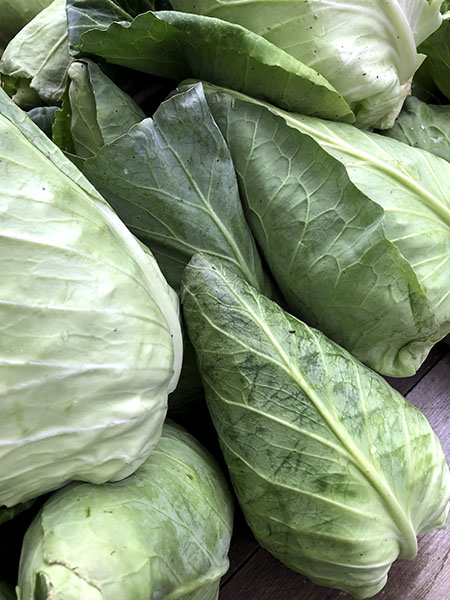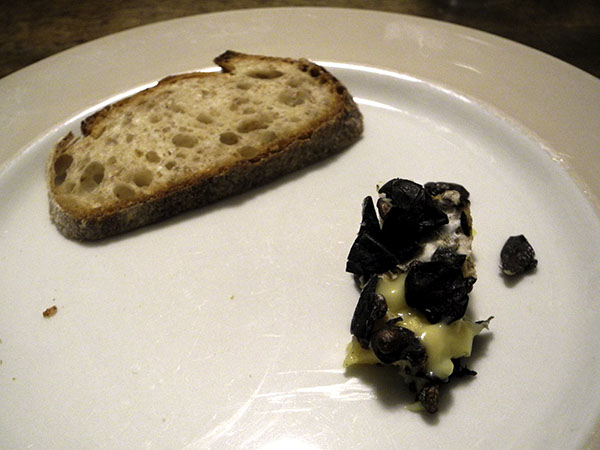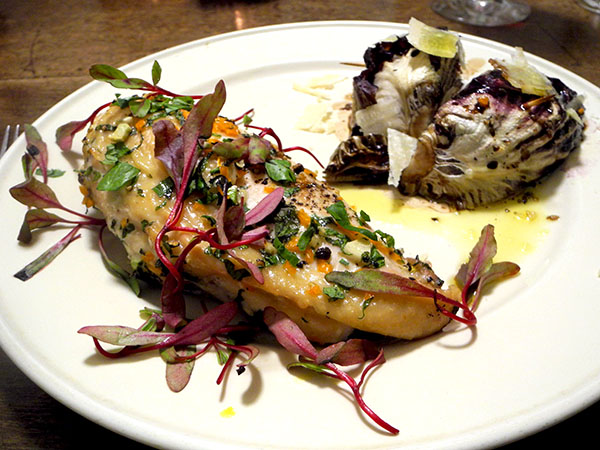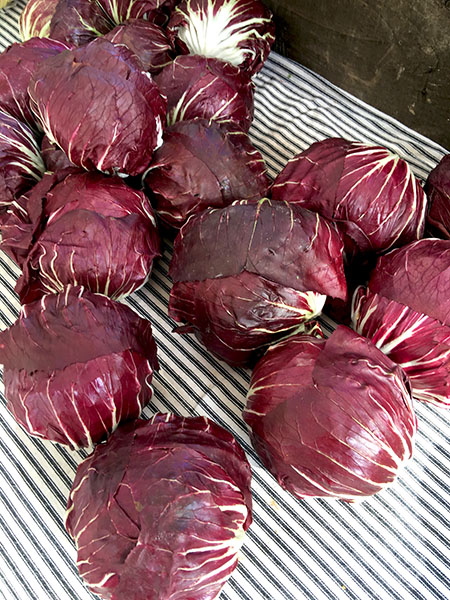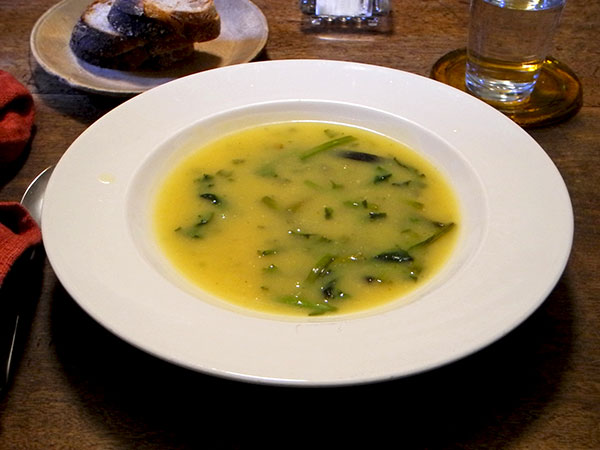
There was chicken in the pot last night. Well, parts of chicken.
As I tweeted last night, near the end of this delicious simple meal, that doesn’t happen here very often, and, repeating something else I wrote, meals with chicken as good as this make me question my judgment.
I worked with the simple outlines of a Mark Bittman ‘recipe’ I’d used at least once before.
- four 6-ounce chicken thighs, the Cascun Farms‘ Cornish Cross breed, from Eataly Flatiron, rinsed, patted dry, and seasoned with sea salt, freshly ground black pepper, and a pinch or 2 of crushed dried habanada pepper, browned well on both sides in two tablespoons or so of Organic Valley ‘Cultured Pasture Butter’ inside a heavy antique high-sided copper pot, the pot covered and cooked over medium-low heat, turning occasionally, until the internal temperature was 155-165 degrees, or the juices run clear, this time taking slightly less than 15 minutes, transferred to plates resting inside my 1934 Magic Chef at the ‘slow oven’ setting, the door wedged ajar with the bamboo toast tongs that rest next to it, one minced ‘yellow shallot’ from Norwich Meadows Farm and about a fourth of a cup of white wine introduced to the pot, the heat raised to medium high and the liquid reduced until it had become a sauce, then more than a dozen chopped tarragon leaves from Flatiron Eataly added and stirred in, the sauce transferred to a glass sauce boat, from which some of it was poured over the chicken
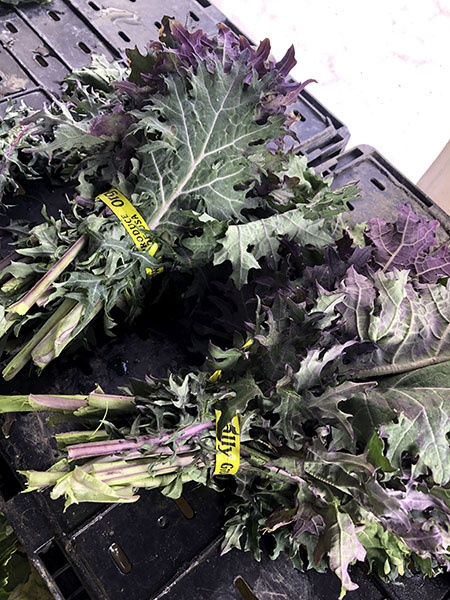
- one bunch of sweet, absolutely delicious, slightly purple flat kale from Norwich Meadows Farm wilted inside a large enameled cast iron pot in a little olive oil in which 2 halved and slightly bruised cloves of Windfall Farms ‘music’ garlic had first been allowed to sweat and begin to brown, the greens seasoned with salt, pepper, and a little more olive oil
- slices of ‘table bread’ from Lost Bread Company
There was a cheese course.
- three very different cheeses: Secret de Compostelle (a wonderful French Basque sheep milk cheese) from Schaller & Weber, a French goat milk log (otherwise unidentified) from Schaller & Weber, and a delicious semi-firm Riverine Ranch water buffalo milk ‘farm stand cheese’
- slices of the same ‘table bread’ that had accompanied the main course
- the wine throughout the mea was an Oregon (Willamette Valley/Dundee Hills) red, Erath Oregon Pinot Noir 2016, from Philippe Wines
- the music throughout the meal was Reinhard Keiser’s 1710/1730 German language baroque opera, ‘Croesus’, René Jacobs conducting the Academy for Ancient Music Berlin, the Berlin RIAS Chamber Chorus, and the Hanover Boys’ Choir Members (the composer was active in the free imperial city of Hamburg, whose burghers seem to have enjoyed a flourishing music scene in the early modern era, without the benefit of a hereditary aristocracy)

